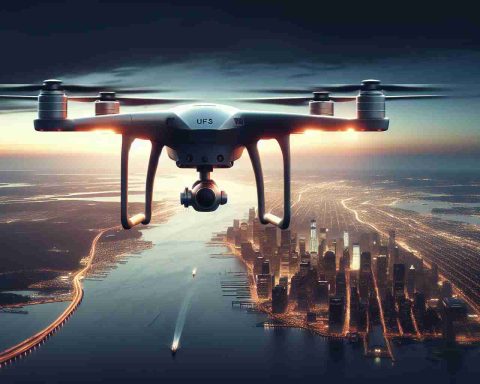Concerns escalate over safety as rocket debris falls in populated area.
On January 23, 2025, China experienced another alarming incident involving its space program when a spent stage from a Long March 3B rocket fell back to Earth. This rocket had launched from the Xichang Satellite Launch Center to place an experimental satellite into orbit. Shortly after the launch, residents of Zhenyuan County in Guizhou were left in shock as debris from the rocket impacted the area, raising serious safety concerns.
Fortunately, there were no injuries reported, but the nature of the rocket’s hypergolic fuel, containing toxic components like hydrazine and nitrogen tetroxide, heightened worries among the local population. This event marks yet another chapter in a troubling pattern of similar incidents involving China’s Long March rockets.
In December 2023, fragments of a Long March rocket had previously fallen near inhabited locations in Guangxi, resulting in explosions that were filmed by onlookers. Furthermore, a June 2024 occurrence saw debris from a Long March 2-C rocket land perilously close to residential regions, inciting panic among community members.
The ongoing challenges of managing rocket debris effectively have prompted discussions regarding the need for improved safety protocols. As China’s ambitious space agenda continues into 2025, many are questioning whether launches should shift to coastal sites to minimize risks posed to civilians on the ground.
Space Debris: A Growing Concern for Society and the Global Economy
The troubling incidents of rocket debris falling in populated areas, particularly related to China’s expanding space ambitions, bring to light critical implications for society, culture, and the global economy. As nations increasingly embrace space exploration and satellite launches, the conversation intensifies around the safety protocols associated with this burgeoning industry.
In a global landscape where space commercialization is accelerating, the safety of population centers is paramount. Local communities living near launch sites face heightened risks, leading to increasing public anxiety and calls for government accountability. This can result in a shift in cultural perceptions surrounding space exploration, potentially fostering a backlash against ambitious space programs if safety concerns remain unaddressed.
From an economic perspective, the implications of debris-related incidents may affect investment trends in the aerospace sector. Companies focused on developing safer launch technologies or satellite systems that minimize debris could see a surge in demand. Conversely, repeated incidents could deter foreign investment and collaboration, undermining global partnerships pivotal for technological advancements.
Environmental considerations also play a role; rocket debris often contains hazardous materials that may pose risks to local ecosystems. Long-term environmental monitoring becomes essential to ensure that falling debris does not compromise the sustainability of surrounding areas, raising questions about space exploration’s footprint on our planet.
Ultimately, the balance between pursuing innovation in space and ensuring public safety will dictate the future of international space policy and cooperation. As the reach of space technology grows, so too does the responsibility to protect those who inhabit the Earth below.
Is China’s Space Program Safe? Escalating Rocket Debris Concerns
## Growing Safety Issues Surrounding China’s Space Launches
The safety of China’s space operations has come under intense scrutiny following a series of incidents involving rocket debris falling in populated areas. The latest event occurred on January 23, 2025, when spent components from a Long March 3B rocket impacted the region of Zhenyuan County in Guizhou shortly after launching an experimental satellite. While there were no reported injuries, this incident has reignited debates over the safety of rocket launches and the protocols established to manage the risks associated with rocket debris.
## Recent Incident and Implications
Residents near Zhenyuan County experienced fear and uncertainty as the debris from the rocket fell very close to their homes. The particular rocket used hypergolic fuel, including toxic elements like hydrazine and nitrogen tetroxide. Such fuel components pose environmental and health risks upon accidental release, intensifying public concern about the potential hazards associated with future launches.
This incident is not isolated. Just a month earlier, in December 2023, fragments of another Long March rocket fell in Guangxi, leading to visible explosions that were captured on video. Similarly, in June 2024, debris from a Long March 2-C rocket landed alarmingly close to residential areas, escalating panic among inhabitants. These recurring occurrences have prompted an urgent re-evaluation of safety practices in China’s burgeoning space program.
## Safety Protocols and Recommendations
Pros and Cons of Coastal Launch Sites
Moving rocket launches to coastal sites has emerged as a potential solution to minimize hazards to populated areas.
Pros:
– Increased Safety: Launching rockets over water decreases the risk of debris impacting human populations.
– Environmental Protection: Coastal launches could help mitigate the environmental risks associated with toxic materials used in rockets.
Cons:
– Logistical Challenges: Coastal launch facilities may face increased operational complexities and costs due to remoteness.
– Impact on Space Operations: Shifting locations could affect the timing and frequency of launches, delaying critical missions.
## Future Directions in Rocket Safety
Innovations in Rocket Design
To prevent similar incidents, the aerospace industry is exploring innovative designs that aim to minimize debris risk. Some efforts include:
– One-time-use Components: Engineering rockets with parts that can either incinerate upon re-entry or are designed to burn up entirely minimizes debris left to fall back to Earth.
– Controlled Descent Mechanisms: Development of systems that guide debris toward unpopulated regions during re-entry could significantly reduce hazards to civilians.
Market Analysis and Insights
With China rapidly advancing its space capabilities, the market for space launches is expanding significantly. However, safety incidents could jeopardize public trust and support for space programs. A cautious approach to addressing safety concerns could help the Chinese space program maintain its ambitious trajectory while reassuring the public.
## Conclusion: The Path Ahead for China’s Space Program
The incidents involving falling rocket debris underline the urgent need for improved safety protocols in China’s space program. As the nation aspires to expand its presence in space, balancing ambition with responsibility will be crucial. Engaging the public through transparent safety measures and considerations can pave the way for a sustainable future in space exploration.
For more insights into space safety protocols, visit Space.com.



















